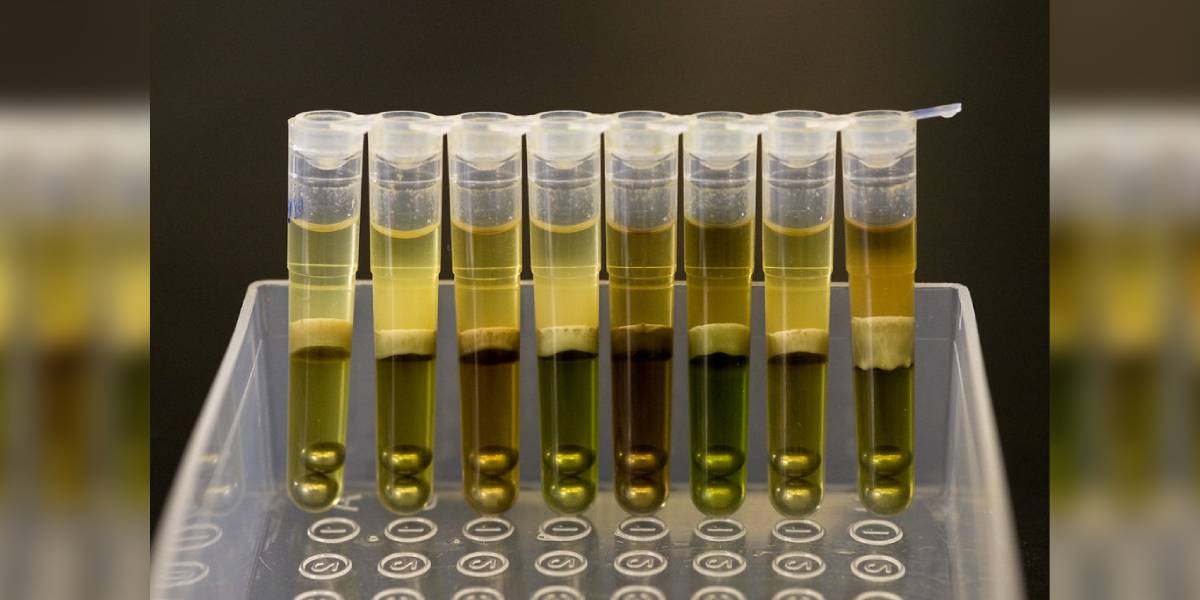The recent scientific breakthrough not only unraveled a long-standing mystery but has also proved to carry significant health implications.

Researchers have discovered that bilirubin reductase is typically found in healthy adults, but it is often absent in newborns and individuals affected by inflammatory bowel disease. (Creative Commons)
The colouration of urine has long been a perplexing mystery. For many decades, the question of why urine appears yellow has remained unanswered. Urine, a liquid produced by the kidneys and expelled through the urinary system, functions as the body’s primary method of eliminating toxins and excess fluids.
The enigma surrounding yellow urine has persisted for at least a century. Scientists have previously understood the presence of a chemical called urobilin, responsible for its yellow hue, but the process by which it forms has remained elusive — tied to both blood and gastrointestinal processes.
Now, a recent breakthrough study, published in the journal Nature Microbiology, has finally unlocked the secrets behind the yellow tint of urine — and it has to do with an enzyme BilR and gut bacteria.
This research sheds light on the previously mysterious origins of urobilin and its connection to the colouration of urine.
Bilirubin, according to researchers from the National Institutes of Health and the University of Maryland, is the cause of the yellow color of the urine.
When red blood cells reach the end of their approximately six-month lifecycle, they undergo degradation, resulting in the creation of a bright orange pigment known as bilirubin. Normally, bilirubin is secreted into the gut, where it is expelled from the body, but there is a possibility for partial reabsorption.
Once bilirubin enters the gut, the bacteria residing there can convert bilirubin into various other molecules through metabolic processes. This breakdown by gut flora helps further modify bilirubin before its elimination from the body.
“Gut microbes encode the enzyme bilirubin reductase (BilR) that converts bilirubin into a colourless byproduct called urobilinogen,” Professor Brantley Hall who led the study said in a statement. He added, “Urobilinogen then spontaneously degrades into a molecule called urobilin, which is responsible for the yellow colour we are all familiar with.”
Simply put, gut microbiota-derived bilirubin reductase reduces bilirubin to urobilinogen, which further reduces to urobilin.
Prior to the study, experts believed that more than one enzyme was involved, according to the researchers. The discovery of the bilirubin reductase enzyme, according to the researchers, may provide new insights into jaundice, inflammatory bowel disease, and gut health.
It could also help to unlock further understanding of how microbes in our gut are linked to human health, the researchers said.
Hyderabad-based nephrologist Dr M Naveen Kumar says that the colour spectrum of urine typically spans from a light, pale-yellow hue to a deeper amber shade, primarily due to a pigment called urobilin, also referred to as urochrome.
“The concentration of this pigment in your urine is determined by the degree of dilution or concentration in your body. Increased hydration, achieved by drinking more water, results in a lighter appearance of the pigment in urine. Moreover, the pigments and chemical compounds present in the food you consume and the medications you take can also influence the colour of your urine,” Dr Naveen Kumar tells South First.
He says that these alterations in colour are usually temporary and don’t persist for extended periods. “However, noteworthy changes in urine colour may signify an underlying medical condition that requires attention and assessment by a healthcare professional,” adds the doctor.
The recent scientific breakthrough not only unraveled a long-standing mystery but has also proved to carry significant health implications. Researchers have discovered that bilirubin reductase, the crucial enzyme, is typically found in nearly all healthy adults. However, it is frequently absent in newborns and individuals affected by inflammatory bowel disease.
This absence of bilirubin reductase might be linked to conditions such as infant jaundice and the development of pigmented gallstones, as indicated by the researchers of the study. The findings suggest a potential correlation between the enzyme’s presence or absence and these health issues.
In a statement, Xiaofang Jiang, one of the study’s co-authors, said that by identifying this enzyme, we can delve into how the bacteria residing in our gut influence bilirubin levels in the bloodstream and conditions like jaundice. “This breakthrough serves as a cornerstone for comprehending the intricate relationship between the gut and liver — an area known as the gut-liver axis,” she said.
“Understanding the role of bilirubin reductase and its connection to gut bacteria may pave the way for novel insights into the mechanisms behind various health conditions, potentially leading to improved diagnostics and therapies for ailments associated with bilirubin levels and the gut-liver axis,” says Dr Naveen.
Scientifically, the gut microbiome’s impact surpasses jaundice and inflammatory bowel disease, with known linkages to allergies, arthritis, and psoriasis. The bilirubin reductase breakthrough marks progress in understanding the microbiome’s role.
This discovery advances comprehension of the gut microbes’ influence on health, unraveling their impact on bodily functions. It’s a crucial piece in grasping how the microbiome affects health, enabling insights into various diseases.
Exploring enzymes like bilirubin reductase deepens this understanding, potentially revolutionising diagnosis and treatments for a wide range of conditions, promising advancements in healthcare.
“The multidisciplinary approach we were able to implement was key to solving the physiological puzzle of why our urine appears yellow… It’s the culmination of many years of work by our team and highlights yet another reason why our gut microbiome is so vital to human health,” Professor Hall said.
Dr Naveen Kumar notes that insufficient hydration is often signaled by yellow or dark yellow urine. Red urine typically signifies the presence of blood, possibly linked to conditions like kidney stones, enlarged prostates, urinary infections, bladder or kidney cancer. Liver dysfunctions can also relate to red urine.
Additionally, brown urine may indicate liver issues or the presence of aged blood in the urinary tract.

Jul 26, 2024

Jul 26, 2024

Jul 26, 2024

Jul 26, 2024

Jul 26, 2024

Jul 26, 2024